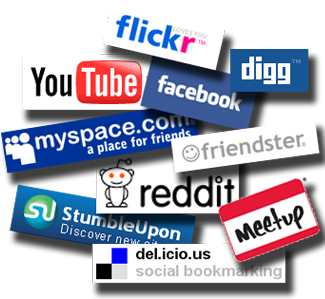
Social Learning Theory
How does learning occur?
In social learning theories, such as Bandura’s social cognitive theory, learning occurs through modeling others in a social environment (Ormrod, 1999). Ormrod, et al. (2009) note that Vygotsky’s sociocultural theory suggests that learning is mediated by tools including language, symbols, and signs. Learners use these tools to internalize concepts and create meaning. At the heart of social learning theories is the idea that learning occurs through observation and social interactions with others.
What factors influence learning?
As its name implies, social learning takes place in a social environment. Therefore, a learner’s environment is a critical factor that influences learning. The social environment allows interactions to take place between learners. These interactions can then be observed and modeled by the learner. During observational social learning, reinforcement and punishment systems can be factors that shape behavior, and therefore influence learning. According to Ormrod (1999), some factors that affect modeling in Bandura’s social learning theory are a learner’s attention, ability to retain and reproduce concepts, and motivation. These are all critical factors, considering modeling is the way in which learning transpires in social learning theory.
What is the role of memory?
According to Bandura (1969), memory involves retaining what was paid attention to in one’s environment. Retention occurs through cognitive processes of symbolic coding, metal images, organization, symbolic rehearsal, and motor rehearsal (Bandura, 1969). Memory in social learning stems from cognitive, behavioral, and environmental factors working together. While paying attention to the learning task at hand depends largely on behavioral and environmental factors, retention takes place cognitively.
How does transfer occur?
According to Ormrod (1999), cognition plays a major role in social leanring. In both cognitivist and social learning theory, memory is based on the cognitive information processing theory. Therefore, transfer in social learning is similar to transfer in cogntivist theory. When schemata are linked in a person’s memory, other pieces of information will become activated. Then knowledge can be transferred and applied to new learning contexts. Cognitive processing, within a social learning environment, facilitates knowledge transfer.
What types of learning are best explained by social learning theory?
Socially-mediated learning is best explained by social learning theory. Some social learning activities include class discussions, think-pair-shares, jigsaws, and other forms of cooperative learning. Social learning theory supports learning that allows individuals to use tools of language, symbols, and signs to develop higher-level cognitive functions (Ormrod, et al., 2009).
How is technology used for learning in the teaching field?
Advances in technology have changed the world of social learning. Learners no longer have to be in a face-to-face classroom with their peers to engage in social learning. In fact, learners do not even need to be in the same hemisphere to engage in dynamic social learning experiences. Social networking sites, such as Facebook, MySpace, Twitter, and Ning are innovative forms of technology that provide students with social interaction and shared learning experiences in a virtual setting. Blogs are also great tools that allow students to communicate and participate in knowledge sharing with their classmates and peers. These forms of educational technology have become more integrated in online learning as a means of providing meaningful social learning experiences in e-learning environments. Other forms of educational technology that facilitate social learning are webinars, video conferencing, telecommunication, e-mail, etc. Innovations in technology have allowed learners to easily engage in social interaction and instantly share knowledge anywhere, anytime, with learners across the globe.